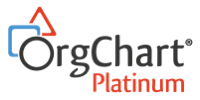I recently gave a presentation on the topic of talent risk management. Most of us do not need to read experts’ articles on the challenges of ensuring that the right talent is always available – because we live with the problem daily. But I would like to propose some food for thought on what I have found helpful in managing to make sure the right supply of quality people are available when needed.
Growing Talent Management Capability
First it’s helpful to recognize that there is a maturity hierarchy that companies climb in their ability to manage talent. They start out at an informal or ad hoc level, and grow to have the strategies, disciplines and technologies to efficiently and effectively ensure the right talent is always rightly engaged. And it’s a constant effort. If metrics or technologies are to be money well spent then you’ll want to engage in growing your company’s talent management maturity. Things like metrics are not particularly valid when a company has unstable, non-standard processes. Metrics are for continuously improvement, which presupposes standardization.
Talent Management Maturity Model

I do get the question, “what are the top ten metrics I should be using to manage my company’s flow of talent. While I hate the question – because it frequently ‘depends’ on where a company is at in its growth – I would like to propose a “starter set” or basics that you can begin with and add more as you grow.
Metrics Starter Set Examples
- Bench strength – The right experience levels, key roles defined, readiness of HIPO (high potential employees)
- Engagement – Determining how engaged employees are with the business. Here the term ‘engaged’ is used in the sense that there is a traceable connection to the company’s bottom line results, such as profit, loss and corporate goals.
- Performance – Meeting or exceeding performance standards; time to reach productivity
- Retention – High potential or High performance employees in the same position for more than 3 years
- Quality of hire – Right person for the job; satisfaction with the employee one year after hire.
Again, these are a starter set, and I believe you will do well to start with any of them and later add the others as time goes on.
Metrics are Required to Manage Skill Gaps
Keep in mind that you will be discovering talent or performance gaps. Without the proper metrics, gaps are impossible to manage. As you grow in your metrics strategy, here are some useful questions:
- What is the measure (its name)?
- What is the measure (its value) today?
- What do you want it to be (the goal)?
- What is the value of the difference to the company (the gap)?
- What is the value of the difference over time? (i.e., how will company benefit from its improvement)
With this approach you can implement the ability to make continuous, measured improvements that connect to the company’s bottom line.
